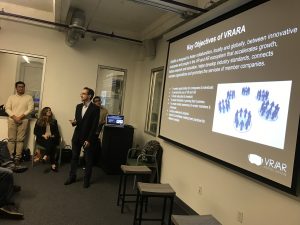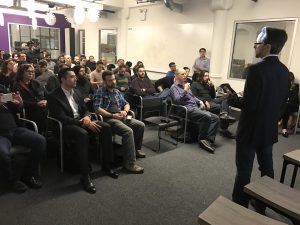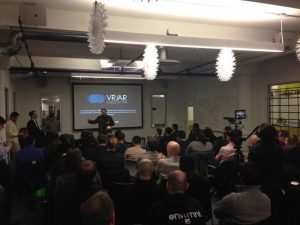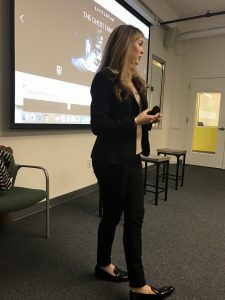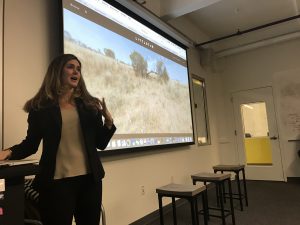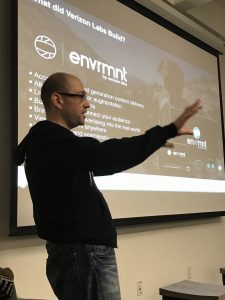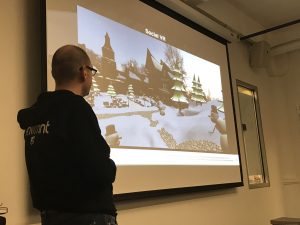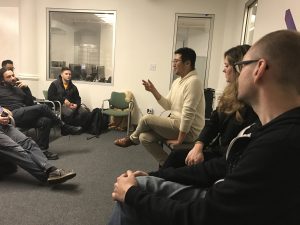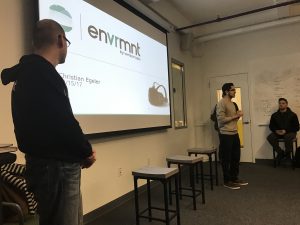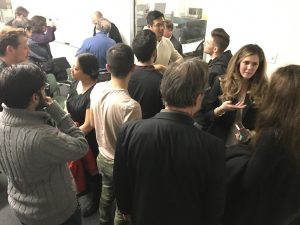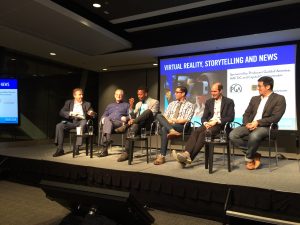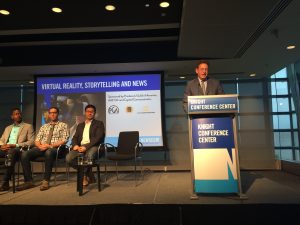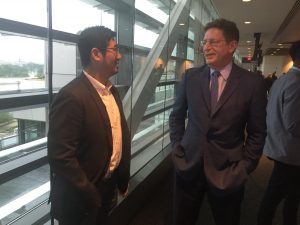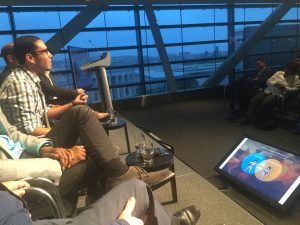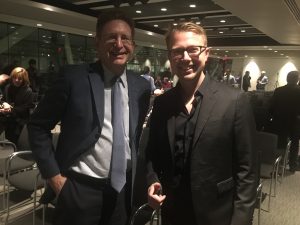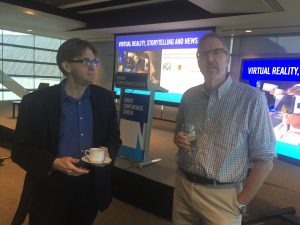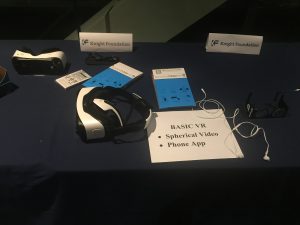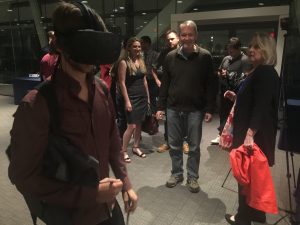There was an aspect of expectation to Mobile World Congress (MWC) 2017 in Barcelona that went far beyond the usual trade show hype. With the mobile world encompassing everything in our technology universe, MWC 2017 very quietly – and firmly – showed that the mobile ecosystem can, and will, show the way forward. All of that hype about VR and super mixed reality last year? We have greater clarity this year – from Samsung Gear to network operators such as Verizon and Orange. Augmented reality seemed too much too soon last year? We now have more AR implementations, and more interest and demand in AR now than ever before. 5G yet another acronymic bamboozle? It will take a while, for sure, but it’s coming – this year.
MWC 2017 was a watershed, in its own quiet way. And it’s not just the big boys who are spurring innovation. Qualcomm and Intel duked it out near each other, as always, but while the companies shared as much of the stage in the IoT, smart auto, AI shuffle, it was more evident than ever that the European start-up ecosystem was making major strides in the mobile SDK world. From gesture recognition (the Swedes showed off Manomotion and Crunchfish) to intelligent location (Finland’s Quuppa), we are seeing more efficient delivery of complex experiences, driven from European university spin-outs and venture-backed start-ups.
The week was endless, as usual, and started with GSMA’s event at the Pullman Barcelona Skipper Hotel, and an excellent panel moderated by Bonfire Lab’s John Gilles, on VR/AR, paneled by Verizon Ventures’ Ed Ruth; Oculus’ Andy Mathis, and Ericsson’s Per Borgklint.
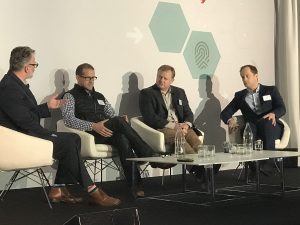
John Gilles, Bonfire Labs; Ed Ruth, Verizon Ventures; Andy Mathis, Oculus, and Per Borgklint at GSMA Summit’s VR/AR panel
Mobile Sunday, at the Estrella Damm event center, saw a critical mass of people – investors, start-ups, and analysts – with a mass of new faces. Kudos to Robin Wauters and Rudy De Waele on growing this event into a seminal MWC gathering.
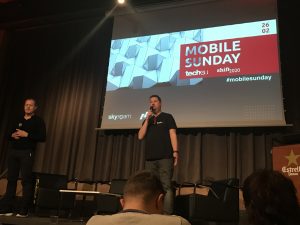
Rudy De Waele and Robin Wauters great the Mobile Sunday crowd at the Estrella Damm event center
With the entire world worried about cybersecurity’s ability to take on new threats, the mobile world had more answers at MWC 2017, including solutions from Estonia. More network-based innovations for smart cities and IoT were on display from everywhere – from SK Telecom to Huawei.
The device manufacturers did not boffo announcements, but incremental progress – from Sony’s Xperia accessories to LG and Samsung’s forthcoming tablets – and the nostalgic hype for the Nokia 3310 and the new BlackBerry device showed the diversity of the market.
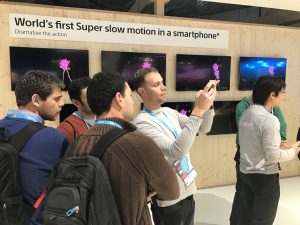
Sony’s super slow motion feature showed that the smartphone has now overcome the likes of GoPro
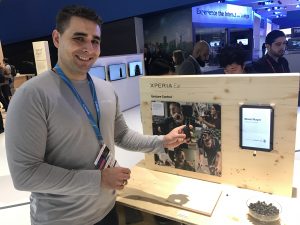
Sony Xperia Ear, an earpiece which uses gesture recognition
Oddly enough, two of the biggest statements at the event emanated from New Jersey: Verizon and Nokia Bell Labs. Verizon’s stand was a show of innovation, from its telematics group to smart city and IoT solutions to the new holding company, Exponent, which will deliver service architecture for other carriers. The company’s envrmnt studio, and end-to-end VR/AR offering, will be part of Exponent.
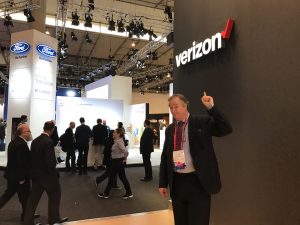
Me at the Verizon stand. The company made a major statement through its envrmnt VR/AR studio
But, overall, the most stunning statement made at the show was from Nokia. Its stand was a testimony to new ideas and even a new attitude. Bell Labs shined with its race track demo, which had radio-controlled cars (cheekily named after Bell Labs luminaries, including Claude Shannon) powered over 4G and 5G networks, showing the efficacy of network controls. Nokia, which acquired Bell Labs and the old Alcatel-Lucent entity last year, has already rebranded and repowered Bell Labs, and it was evident at MWC 2017.
We can only hope that the coming year will deliver more experiences powered by network innovation, which was quietly the star at MWC 2017.
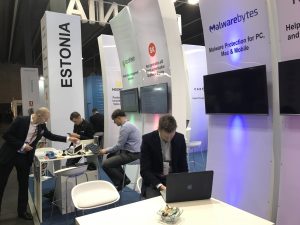
Estonians hard at work, first thing in the morning, on Day #3 of MWC 2017
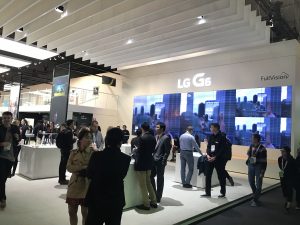
LG was a quiet presence at MWC 2017
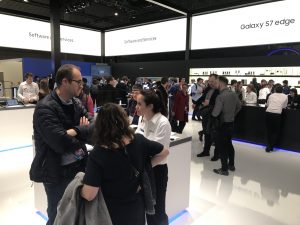
Samsung bristled with energy; its Galaxy Note 7 disaster well in the rearview mirror
IBM’s Watson story has increased since last year, and drew flocks of people to its psychedelic-meets-Deco booth, complete with the “cognitive dress,” which is designed based on user’s moods and whims.
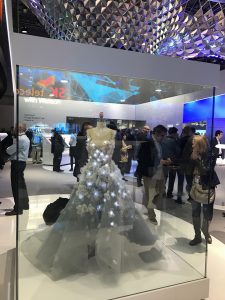
IBM’s “cognitive dress”
Intel’s mega-pixel wall
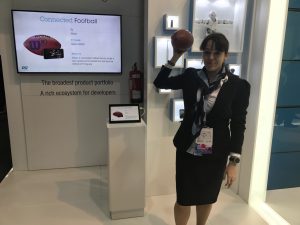
ST Microelectronics’ “smart football” – the Wilson X Smart Football – brings IoT to the sports world
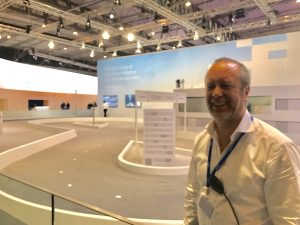
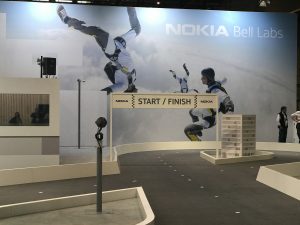
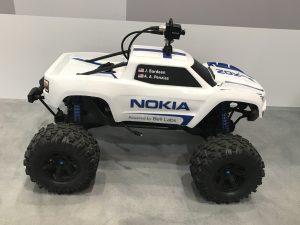
Kim Mathews mans the Nokia Bell Labs race track; scenes of the track and one of the radio-controlled cars, featuring the names of Bell Labs Nobel laureates John Bardeen and Arno Penzias
